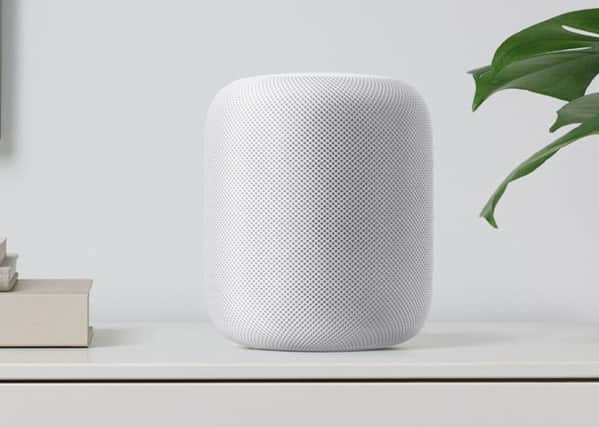Should you buy Apple's new HomePod to play music?


Pods that listen out for commands to turn on the lights, the TV and the hi-fi were big fads of last year, and became almost impulse buys as the prices fell. But the entry of Apple into the voice-command market turns it upside down.
The HomePod is its rival to Amazon’s Echo and the Google Home, and its appearance in the UK, a couple of months later than expected because its developers needed “a little more time”, has been greeted with the sort of hype only an Apple launch can command.
Advertisement
Hide AdAdvertisement
Hide AdAt around £320, the HomePod is vastly more expensive than its competitors, so the expectation is that it will do a good deal more. In fact, it does less.
It’s great at doing only one thing and that’s playing music. The HomePod, despite being easily small enough to sit on a bookshelf, is really a high-quality loudspeaker with voice command technology bolted on.
Apple has followed the business model that served it so well for successive generations of iPods, iPhones and iPads, integrating its music library with the hardware. In this case, it means you have to buy a £10-a-month subscription to Apple Music in order to have songs streamed directly to the HomePod, in high quality and without limits.
However, Apple’s is just one of many such libraries out there, and you may well already have a loudspeaker arrangement that you like - in which case the appeal of this new device comes down to nothing more than the gimmick of being able to talk to it rather than press buttons.
Advertisement
Hide AdAdvertisement
Hide AdVoice functionality aside, the HomePod is a credible alternative to the Sonos One and other high-end music streaming systems. With a built-in amplifier, deep bass speaker and an array of seven tweeters, it is capable of genuine hi-fi output. And Siri has been programmed with information about the music it plays, so it can tell you, for instance, that Dave Clark and four other people comprised the Dave Clark Five, before playing Bits and Pieces.
You might expect that despite Apple’s obvious preference for its own streaming service, the HomePod would nevertheless work with music from other sources - but that isn’t the case. Spotify is not supported at all and nor is live radio, though you can stream music stored locally on your iPhone. If you don’t have an iPhone or other Apple device, the HomePod is just an expensive bookend.
At £320 for the hardware and £10 a month for Apple Music (or £15 for a family of six) the cost of the HomePod is at least £440 in the first year, which makes it an extravagant choice for a new hi-fi system. All the same, Apple says it has around 36m subscribers to its music service and therefore expects to move a few million pods in their direction.
For simplicity, it can’t be faulted. There are no wires other than a mains lead, and it requires no setup beyond holding your phone close by while it reads information from it. But without, for the moment, the multi-room convenience and the flexibility of the Sonos, your choice should come down to personal taste. As with all hi-fi - listen first, then decide.